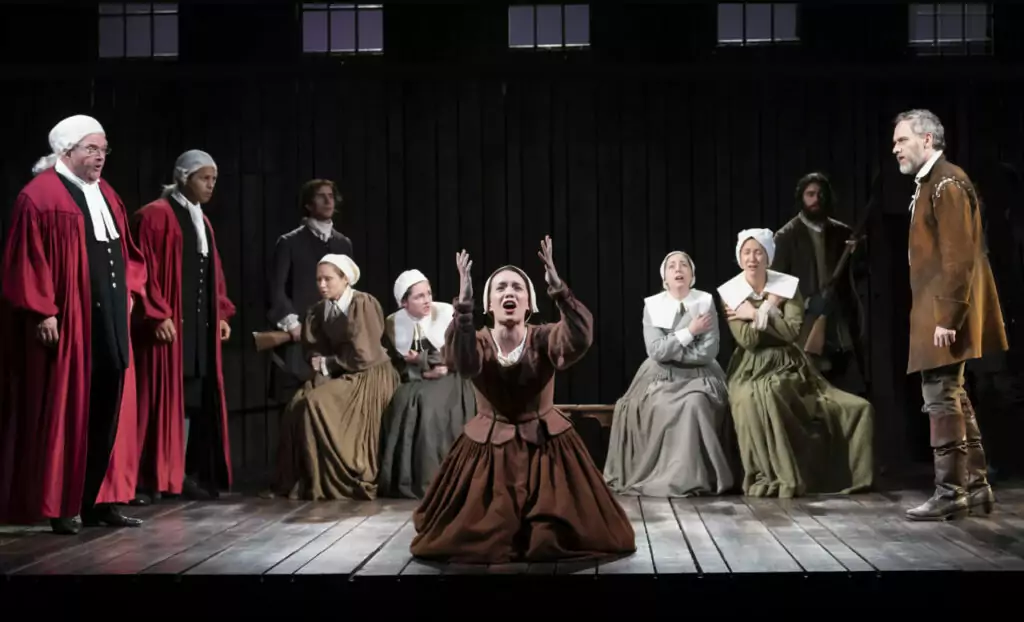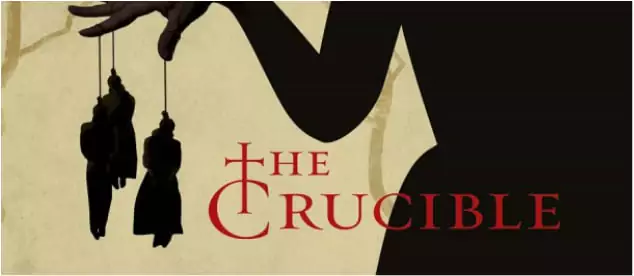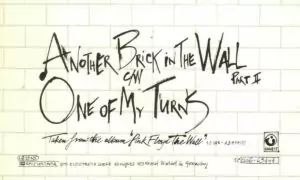The following review example can serve as a guide for students trying to find inspiration when writing an assignment on the themes in “The Crucible”

✅ AI Essay Writer ✅ AI Detector ✅ Plagchecker ✅ Paraphraser
✅ Summarizer ✅ Citation Generator
Why do old tales of witches and modern politics still cast a spell over us? Arthur Miller’s play, “The Crucible,” first performed in 1953, provides an intriguing answer. This play, weaving a partly fictional tale about the 1692-1693 Massachusetts witch trials, remains strikingly relevant today. Its enduring relevance stems from the allegorical connections Miller draws to his own times.
In the 1950s, America was gripped by a different kind of witch hunt, not for witches, but for communists. This frenzy, led by Senator Joseph McCarthy, mirrored the irrational fear and accusations of the earlier witch trials. Miller cleverly linked these two periods of history, showing how fear can distort reality and lead to unjust persecution.

This theme of fear-induced hysteria is not just a historical lesson but a current reality. It resurfaces in various media, demonstrating how quickly rational people can resort to blame during crises. Because this pattern repeats through history, “The Crucible” is more than a historical play. It’s a lens through which we can examine our present and future. This is why it continues to be taught, generation after generation, as a vital lesson on the consequences of fear and hysteria in society.
What is the theme of “The Crucible”?
“The Crucible” is a play that shows how quickly fear and panic can spread in a community. It is set in Salem, where people start accusing each other of witchcraft. This creates a lot of fear and makes people paranoid. Everyone starts to suspect their neighbors, even those they once trusted, of doing terrible things like working with the devil. The play shows that this fear isn’t just because of religion. It’s also because people use the situation for their own gain. For example, Abigail accuses Elizabeth Proctor of being a witch so she can get rid of her. Reverend Parris uses the fear to make himself more powerful in the village. Thomas Putnam takes revenge on his enemies by getting them accused of witchcraft. The play shows that hysteria can be dangerous because it lets people act on bad feelings and desires, pretending they are doing the right thing. It’s a warning about how important it is to stay calm and use logic instead of letting fear control us. This story is similar to what happened in the 1950s in America, known as McCarthyism, where many people were wrongly accused of being communists.

Intolerance and Ignorance
What happens when people are too quick to judge others? “The Crucible” is set in a time and place where church and government are the same. In this society, everyone follows Puritanism, a very strict type of Protestantism. Here, breaking moral rules is the same as breaking the law. Everyone’s life must follow these strict rules. If someone lives differently, people see it as a threat to society and to their religion. In Salem, where the play is set, people are either with God or the devil. There’s no middle ground. This black-and-white thinking leads to witch trials. These trials are a way to get rid of anyone who doesn’t fit in. They label people as devil worshippers if they are different, and then those people are removed from the community. The play shows characters like Reverend Parris, who is very suspicious of anyone different or who disagrees with him. This fear of difference leads to unfair judgments. People accused of witchcraft are seen as guilty without any real proof. The play shows how important it is to understand and accept others. Without tolerance, societies can fall apart and hurt innocent people. This story teaches us to think before we judge and to be open to differences.
For them that quail to bring men out of ignorance, as I have quailed, and as you quail now when you know in all your black hearts that this be fraud.
Arthur Miller
Judgement and Justice
Is it always right to stick to your first decision, no matter what? “The Crucible” explores this question through characters like Danforth and Reverend Hale, focusing on themes of judgment and justice. In the play, Deputy Governor Danforth is in charge of judging the accused people of Salem. He is very firm in his decisions, even when he is wrong. For instance, he wrongly accuses Elizabeth, Martha Corey, Rebecca Nurse, and others of being witches. Despite evidence and logical reasons showing he’s wrong, Danforth refuses to change his mind. He thinks a good judge should never doubt his decisions, but this belief leads him to make grave mistakes.
Reverend Hale, on the other hand, learns from his mistakes. At first, he believes he’s good at identifying and fighting witchcraft. But as the play progresses, he realizes how wrong he is. By the end, he doesn’t care about the court’s official judgments. He only wants to save people’s lives. This shows a big change in Hale. He goes from being confident in his judgments to understanding the danger of wrongly judging others. Danforth doesn’t learn this lesson, and he continues to believe in his flawed judgments.

The play also shows how characters struggle with the consequences of their choices. Elizabeth Proctor, for example, finds it hard to forgive her husband John for his affair with Abigail. But as the story goes on, she starts to think she might be partly responsible for his cheating. She accepts her imprisonment and John’s choice to die, seeing them as fair outcomes. This shows how her understanding of justice changes.
Reverend Hale’s idea of justice also changes drastically. In the beginning, he thinks catching witches is doing justice. But by the end, he’s asking people to lie and confess to witchcraft just to save themselves. Earlier, he would have seen false confessions as wrong, but now he sees them as a way to survive. Elizabeth doesn’t agree with Hale’s new view. This difference in how they see justice leaves the ending of the play open to interpretation.
“The Crucible” makes us think about how judgments and ideas of justice can change. It shows the danger of being too sure of our judgments and not being open to other possibilities. The play asks us to consider what true justice is and how our actions and decisions can impact it.
Consequences
Can a small mistake turn into a big problem? In “The Crucible,” John Proctor’s affair with Abigail is over, but its effects are just starting. Abigail still thinks John loves her and wants to replace his wife, Elizabeth. She uses the witchcraft accusations to try to get rid of Elizabeth. But her plan fails, and both John and Elizabeth are accused of witchcraft. Similarly, Tituba falsely confesses to witchcraft to stop her master from beating her. This confession leads the girls of Salem to accuse many others. They didn’t think about how serious these lies could be. Giles Corey also faces unintended results. He casually mentions his wife hiding books, not realizing it would lead to her imprisonment and his own death. These examples in the play show how small actions can have big, unexpected consequences. It’s a reminder to think about the possible outcomes of our actions.

Arthur Miller’s “The Crucible” is a powerful exploration of how fear and hysteria can lead to tragic consequences in society. The play examines themes of intolerance, misguided judgment, and justice, highlighting the dangers of irrational fear and the unforeseen impact of personal choices, set against the backdrop of the Salem witch trials.
*Note: If you use any references to help you write your analytical essays, you should include them in your text as well as in the reference list. You can use science citation generator to help you create properly formatted list of sources.
Follow us on Reddit for more insights and updates.





Comments (0)
Welcome to A*Help comments!
We’re all about debate and discussion at A*Help.
We value the diverse opinions of users, so you may find points of view that you don’t agree with. And that’s cool. However, there are certain things we’re not OK with: attempts to manipulate our data in any way, for example, or the posting of discriminative, offensive, hateful, or disparaging material.